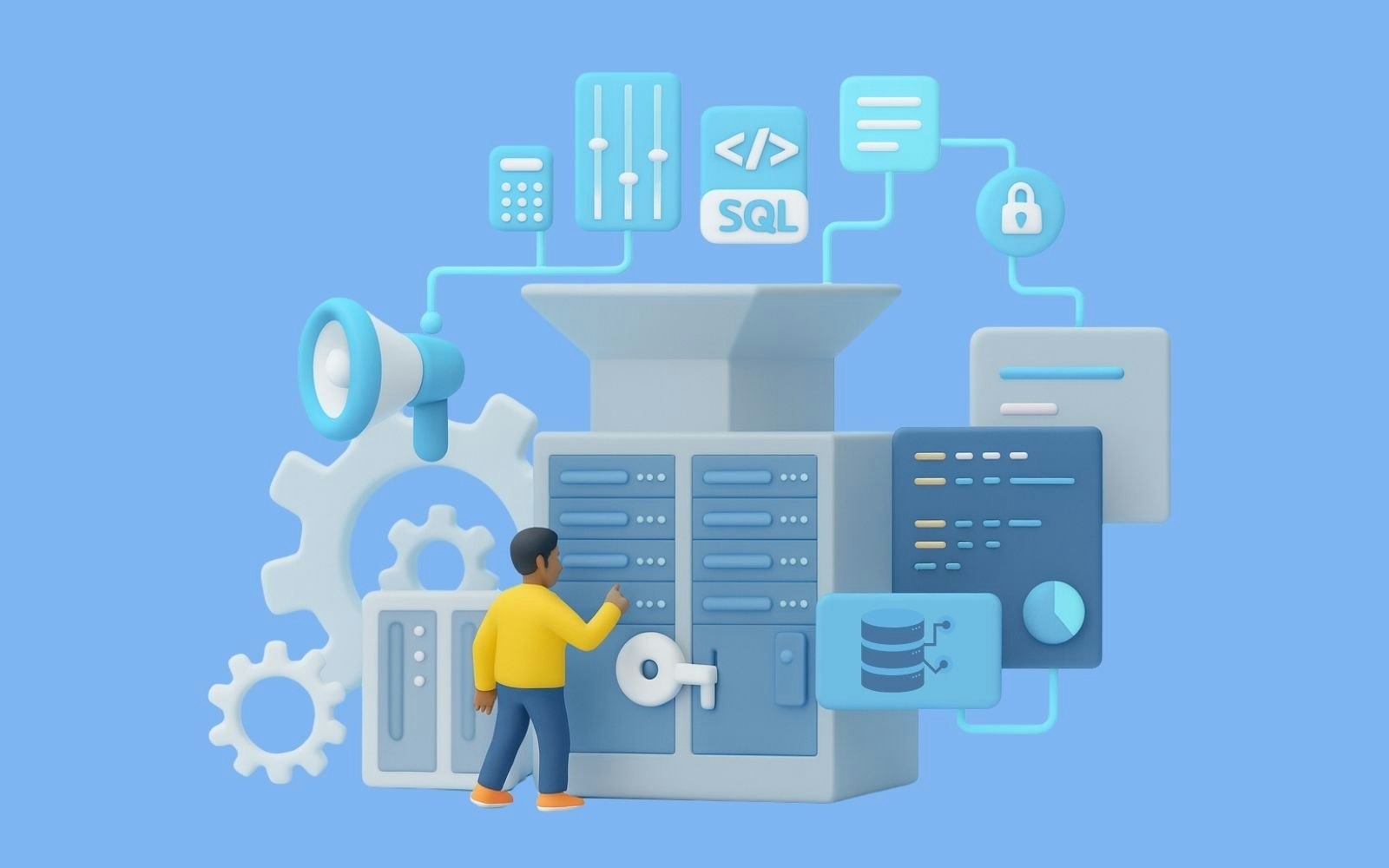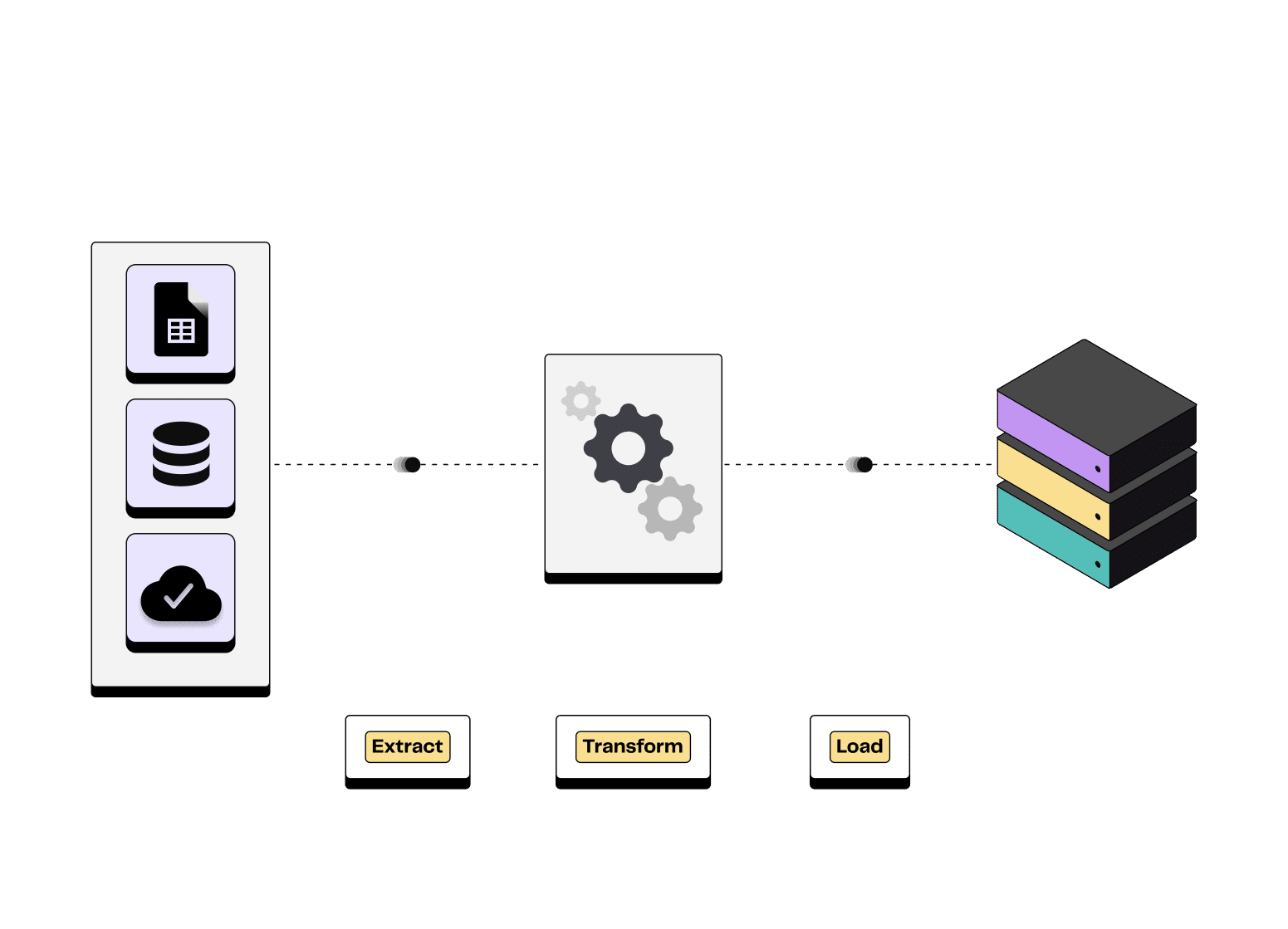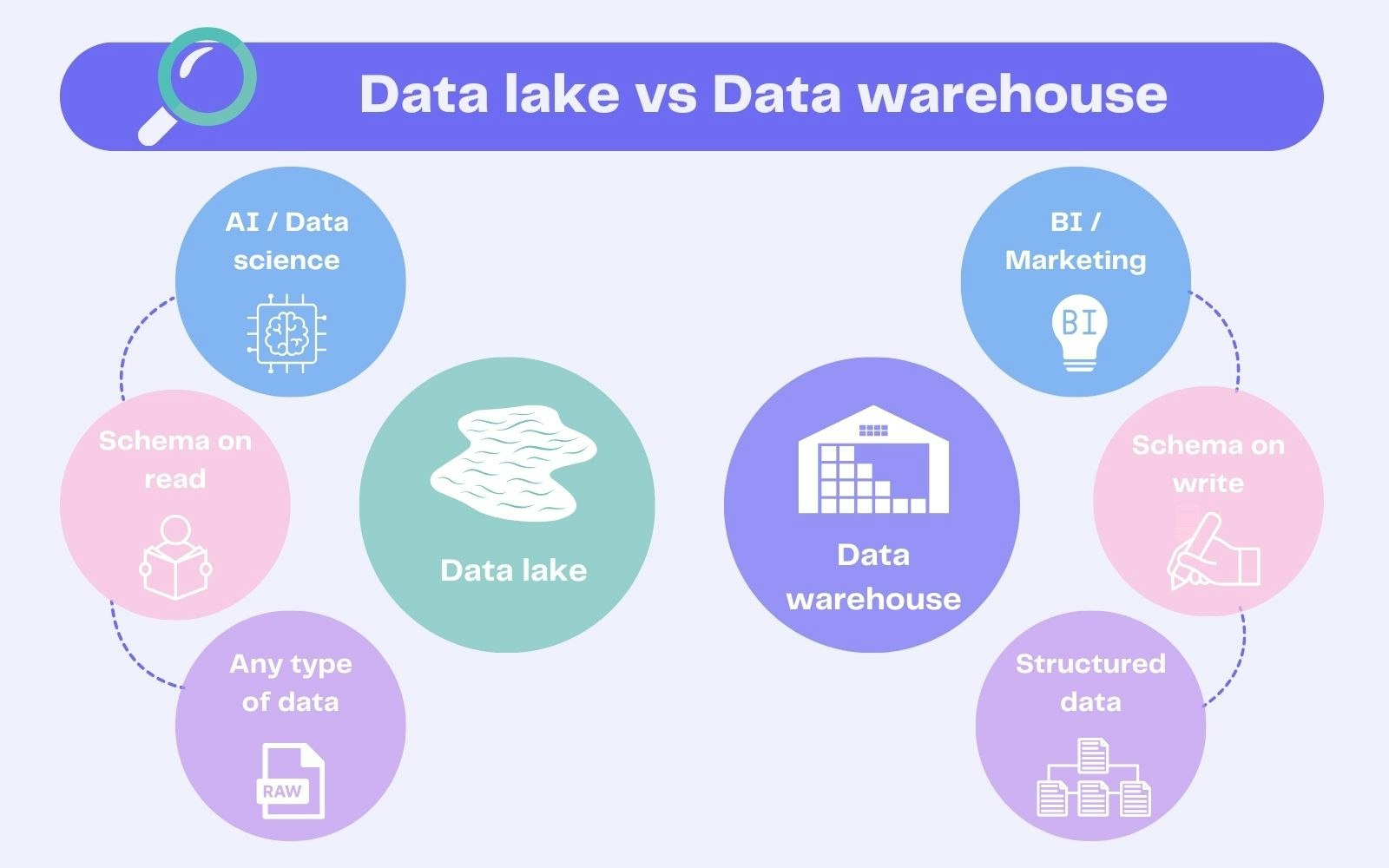
Building a modern and scalable data architecture
6min • Last updated on Nov 20, 2025

Olivier Renard
Content & SEO Manager
According to Informatica’s State of AI and Data report, 86% of data leaders prioritise flexible architectures to improve governance and operational efficiency. They are seeking modern, agile platforms capable of supporting new use cases, such as AI-powered automation.
In this context, the way data flows and transforms to deliver everyday value becomes a key challenge.
Key Takeaways:
Data architecture defines how a company stores, organises, and harnesses its data.
It provides the technical foundation that ensures the smooth circulation of information.
A robust infrastructure guarantees quality, governance, accessibility, and security.
Modern architectures provide greater flexibility and adapt to the needs and technical constraints of each organisation.
With a composable CDP, data architecture becomes a lever for marketing activation and AI usage. Data powers actions in real time, without complexity.
🔎 What is data architecture, and how can you choose the right model for your organisation? Discover how to implement a modern stack that evolves with your business needs. 🚀
What is data architecture?
Data architecture refers to the way a company organises, governs and enables the flow of its data.
It defines the standards, models, technologies and pipelines needed to ensure the effective use of information.
With the multiplication of touchpoints, the rise of connected devices, and real-time event collection, data volumes are exploding. A robust architecture is essential to maintain control. Its role is to ensure data quality, security, accessibility and consistency across the organisation.
Driven by the massive adoption of the cloud, the trend is towards the Modern Data Stack: a set of technical components (ingestion, transformation, storage, governance, analysis, activation) designed to be flexible, scalable and interoperable. This modern infrastructure makes it easy to connect tools and industrialise data and AI use cases.
👇

Modern marketing stack: the complete guide
Why is it important?
Companies generate vast amounts of data from multiple sources: websites, mobile apps, CRM, marketing tools, internal systems. Without a strong framework, this data remains scattered in silos and becomes difficult to use.
Data architecture helps coordinate flows, ensure proper governance, and ensure compliance with regulations (GDPR, CCPA, HIPAA). It also helps control cloud-related costs by avoiding redundancy and selecting the right services for each use case.
It also acts as a foundation for artificial intelligence (AI) projects. Predictive models, AI decisioning, generative or agentic AI require reliable, traceable, and well-organised data. This foundation feeds the models, facilitates automation, and makes data truly usable by business teams.
Main components of a modern architecture
1️⃣ Data ingestion
Data is collected from various sources: points of sale, CRM, websites, mobile apps, analytics tools, ad platforms, and more. It may be loaded in batches or streamed in real time, depending on business needs.
ETL (Extract, Transform, Load) or ELT (Extract, Load, Transform) processes standardise these flows to move data to the target environment without disruption.

Extract Transform Load process illustration
2️⃣ Storage and organisation
Data is then stored in a suitable environment. Cloud solutions offer more agility and scalability than on-premise systems.
The data warehouse stores structured data, ready for analysis and business intelligence. It provides a solid base for developing marketing use cases.
The data lake is ideal for storing large volumes of multi-format data, useful for exploration or machine learning.
The lakehouse combines both approaches in a single platform.

Data lake vs Data warehouse
The data model organises tables and defines relationships between entities (customer, product, order) and attributes (name, price, date). A clear data model facilitates analysis and improves performance.
3️⃣ Processing and orchestration
Orchestration automates repetitive tasks and streamlines tool interactions, ensuring reliable and up-to-date data. Pipelines apply rules for cleaning, normalisation and enrichment to make data usable by business teams.
Tools like Apache Airflow, Dagster, or Prefect manage task sequences, monitor dependencies, and automate updates.
4️⃣ Governance, security and observability
Modern architectures also include governance mechanisms: access and role management, data catalogues, usage traceability. They ensure regulatory compliance and data security through encryption and clearly defined authentication processes.
Data quality management relies on validation rules, duplicate detection and missing value handling. Observability complements this by monitoring the health of data flows in real time to quickly detect incidents.
5️⃣ Exploration and activation
At this stage, data becomes usable by business teams. Business intelligence tools help build dashboards, monitor KPIs and analyse performance by segment, channel or timeframe. Every department gains a clear, shared view of reality.
The activation layer enables marketing teams to launch targeted campaigns, personalise messaging or optimise customer journeys. AI decisioning uses data from the warehouse to identify the best actions to trigger.
As a key component of a modular CDP, Reverse ETL syncs data back to CRM, advertising platforms, product tools, or customer service platforms.
Types of data architecture
Companies can rely on several architectural models to structure their data environment. The table below provides an overview of the most common options.
Architecture type | Description | Key use cases | Strengths and limitations |
|---|---|---|---|
Data warehouse | Centralised warehouse optimised for analysis and reporting. | BI, financial reporting, marketing oversight, historical analysis. | Clear, robust, high-performing for analytics. / Less suited for raw or unstructured data. |
Data lake | Storage repository for large volumes of all types of data. | Data science, machine learning (ML), logs, IoT, big data. | Very flexible and scalable. / Risk of becoming a “data swamp” without governance. |
Lakehouse | Unified platform combining data lake and data warehouse. | Advanced analytics, ML, real-time use cases, self-service BI. | Combines lake flexibility with warehouse reliability. / Recent systems still evolving. |
Data mesh | Decentralised model: each domain manages its data as a product. | Large multi-domain organisations, distributed data teams. | Encourages autonomy and business alignment. / Complex to govern, requires strong data maturity. |
Data fabric | Abstraction layer that connects and virtualises data across systems. | Multi-system organisations, hybrid or multi-cloud environments. | Unified view without moving everything. / Implementation can be complex and tool-dependent. |
How to implement an effective infrastructure
Best practices:
Start from use cases: BI, reporting, marketing personalisation, predictive AI, MLOps, etc. Tech choices must serve well-defined needs.
Choose the right storage model: data warehouse for analysis and activation, lake or lakehouse for raw and large-scale data.
Promote interoperability: opt for open, API-first cloud solutions that integrate easily with the stack.
Include governance and security from the start: access management, data catalogues, traceability, and privacy-by-design compliance.
Common mistakes:
Building an overly complex architecture that does not match the size of the team or the business use cases.
Stacking tools without an overall vision, at the risk of creating a system that is difficult to maintain.
Neglecting data quality: without control rules, dashboards and AI models lose accuracy.
Working in silos between data engineering and business teams instead of collaborating around shared metrics.
The role of a composable CDP in a modern data stack
Unifying customer data
A Customer Data Platform (CDP) brings together information from multiple sources: CRM, website, mobile app, in-store transactions, customer service... The goal is to build a 360° customer view usable by business teams, thanks to identity resolution.
A composable platform relies on the customer data stored in the data warehouse or lakehouse to perform this unification. The information is not copied into a proprietary système but remains within the company’s infrastructure.
This model avoids silos, simplifies governance, and ensures a single source of truth.

DinMo architecture
Facilitating AI-powered activation
Once data is unified into a 360° customer view, the CDP enables the creation of dynamic segments. Marketing teams select criteria to target their audiences.
DinMo enriches segments using AI attributes: churn risk, product affinity, estimated lifetime value (LTV). These signals power more relevant campaigns, offering a personalised omnichannel experience.
Customer Hub is your marketing cockpit: it helps you understand, experiment and manage your activities. It provides insights into your data and tracks the impact of your actions.
A natural complement to agentic marketing, the CDP provides the data models need to make decisions and take action.
Why choose the composable approach?
A composable CDP integrates directly into your existing stack. It connects to all major cloud data warehouses (BigQuery, Snowflake, Redshift, Databricks) and existing tools within the company. Each component evolves independently. This approach leverages your infrastructure without migration or duplication.
Operationally, it offers greater scalability and stronger governance. With DinMo, data remains under the control of IT teams, while business users can create segments and launch scenarios through a no-code interface.
💡 For example, an e-commerce company centralises its data in a cloud warehouse. The composable CDP connects to it, unifies customer profiles, and generates RFM segments (recency, frequency, monetary value).
This information is sent to the CRM and ad platforms to launch targeted campaigns. Results are fed back into the database to refine scores and improve future actions.
Conclusion
Data architecture is the foundation of any data strategy. By ensuring reliable, accessible, and well-governed data, it supports BI, personalisation and AI initiatives.
A modern architecture must be flexible, scalable, and aligned with business objectives. It provides a coherent ecosystem that empowers business teams.
DinMo’s composable CDP enables seamless activation of data within your data warehouse. Unification, advanced segmentation, personalisation, and performance tracking: your data stack becomes a powerful lever for growth.
👉 Book a personalised demo to modernise your architecture and turn your data into measurable actions.




















